The Master and Form: Brendan Fernandes at the Graham Foundation
by Gabrielle Welsh
Brendan Fernandes wants to make you move. The Canadian, Chicago-based artist choreographs the audience just as he does the professional ballerinas performing in his pieces. The viewer, put into a position of power—as choreographer/curator— must realize their control of the object: the body of this dancer. Fernandes questions hierarchical spaces and hegemonic normalities through performances, building upon his experience as a ballet dancer and now, an artist. His hesitation towards binaries, instead looking to ways to promote inclusivity of spaces and bodies through critique of the everyday, notes the ways in which ‘the normal’ is a dance—a type of choreography in itself. Gabrielle Welsh sat down with Fernandes to talk about his most recent exhibition, The Master and Form, being queer in the dance world, and the absolute fun of manipulating the viewer.
Gabrielle Welsh: When I was at the Graham Foundation for the performance of your exhibition, The Master and Form, there was a didactic text that mentioned the process of ‘queering the space.’ I wanted to begin with this, as I have been thinking through what that actually means—as a term that has recently tended to circulate in academic and art circles. How do you define this, specifically, in your work?
Brendan Fernandes: Yes—I think it is an interesting term that has been coming up a lot in academic circles, art circles. For me, as a person that identifies in being queer, queer does not necessarily mean any sort of defining gender or sexuality. For me, queer is an open marker for self-identifying, self-inclusivity. It is a non-definitive thing that allows people to define a community, define a solidarity. When I talk about the space, it goes to the idea of safe space—creating a space that is inclusive, but also one that is changing. Within a space like the Graham Foundation, it becomes a dance space. It becomes a space for discussion. It becomes a space for collaboration. It becomes a space for gathering. In this way, ‘queering the space’ is confronting the space to become something, which also then becomes something else. It is always in a state of flux, which comes in line with the way I see myself through identity. Queerness is cultural, it is sexual, it is gendered—but it is also fluid. The queering is about fluidity.
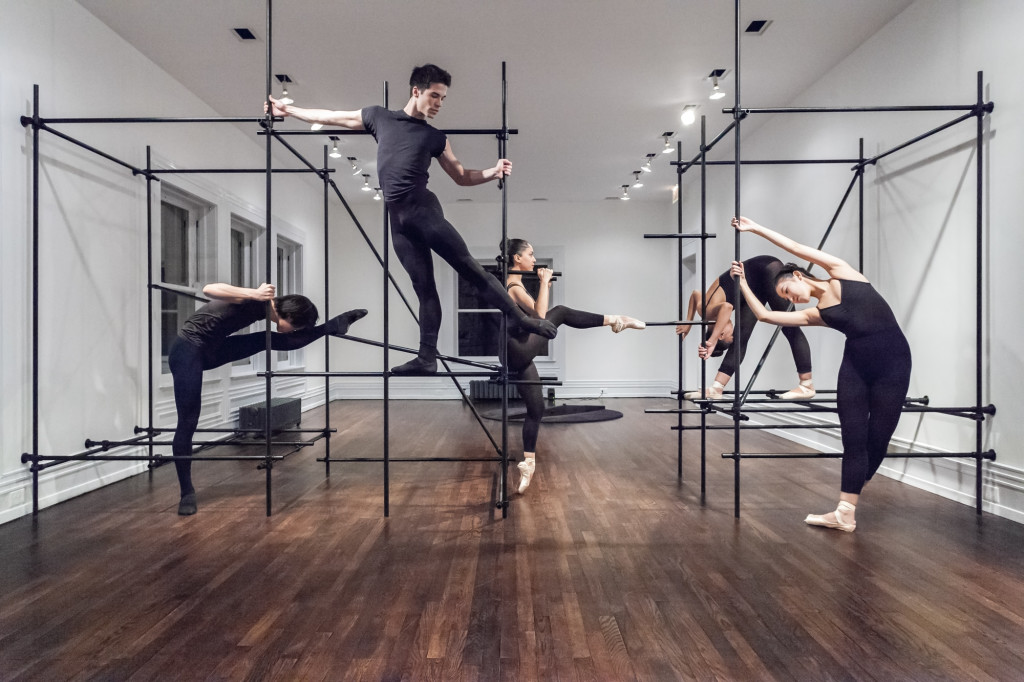
GW: I think that fluidity was what was so freeing to me when I started identifying as queer—I did not have to put myself into one binary or another. I am starting to see how that could transition itself into architecture.
BF: These binaries so want to define all of the time. So many people ask me, are you Kenyan? Are you Indian? Are you Canadian? Are you American? And I say, I am all of them; I identify through all of them. Most of my work—my social and political thoughts—come through punk rock music. That is something that influenced me as a teenager growing up in Toronto. But also, ballet was a life that I lived in. Even in The Master and Form you can think about my work as a dancer—as we had to define ourselves all the time as dancers. How tall we are, how much weight we are, our size, everything is measured and put into a very specific construction. Even now, when I call for dancers and I do auditions, I make these queer calls. If you self-define within that statement or that call, you accept yourself and put yourself there. This empowerment relates back to queering the space, as well—but on the level of the performer, so you can say: I am this. I belong to this. The work is a product of that agency.
GW: Through this exhibition, and your work more broadly, I have been thinking about my own experiences in ballet—perhaps this self-inflection has something to say about the point, or idea of the piece.
BF: That is the point of my work, but also to look at the cultural hegemonies and structures of the ballet as an institution, and the ideas of power dynamics within that. Outwardly, we see ballet as being romanticized and beautiful, but it is also a very strict world. It is an industry, an art form, and a business. I think about that with regards to the greater sociopolitical aspects of the world we live in: hegemony. Particularly, cultural hegemony through capital. I am making correlations through the ballet, at the same time I am thinking about its histories. Ballet began as a way to bow to Louis XIV. It is a French court dance that thus became the dance of all the kings. It is always seeped within these royal powers, and the dance form itself can be something that has a certain dedication to it. It can support you but can also bring you down, in a way. If you think about pointe shoes, they are a kind of apparatus that we use to augment and train with, and even in the physical sense—there is this way and expectation to how we manipulate and change our bodies. There is a BDSM question of pain and pleasure, kink and endurance. There is also a longevity to it all too—you are not going to be a ballet dancer in your fifties.
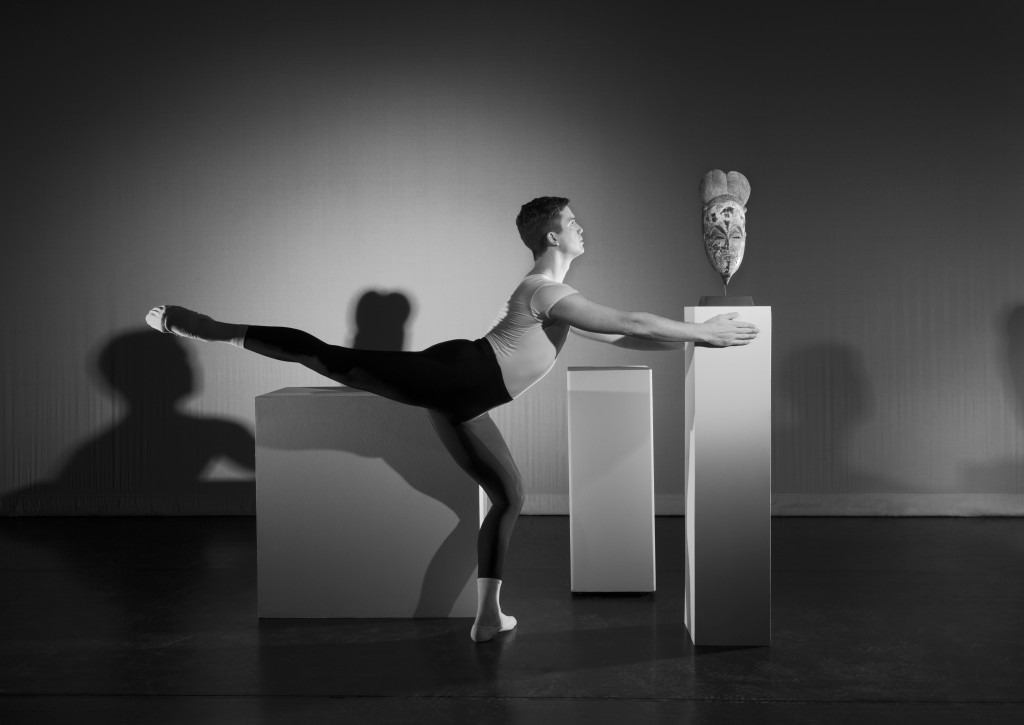
GW: I was thinking about these principles of pain when I was watching the performance, primarily on the main floor of the Graham. There was a structure in center of the room, and a ballerina was just cemented in retiré—it was actually a bit painful to watch.
BF: It is funny, somebody said to me in the Graham performance, “This is getting really intense.” It was interesting—because there is an intensity to it, but the dancers are just suspended in stillness. Though, in that stillness there is an activation, which is an endurance. People were getting really anxious.
GW: Right—typically, intensity in ballet is built through the choreography, the music, etc., but in your piece, the tension is born through the suspension of poses.
BF: You see them doing it because they are trained: they can do it, and for a long period of time. Afterwards, the performers will say their hips hurt, and this is in pain—in dance, you have the music, and it is meant to distract us. When we are watching a ballet on stage you are seeing these really intense things, but we do not question their high kicks, or the standing in certain poses for long periods. We just get taken by the scene. However, in The Master and Form, there is a confrontation. Your body is so close to a dancer—you see them sweating, you see the endurance up close. As the audience, you have to realize, “I am making them do this,” and then you have to witness it. You are watching them suffering; how do you take that on? My audience has a lot of responsibility.
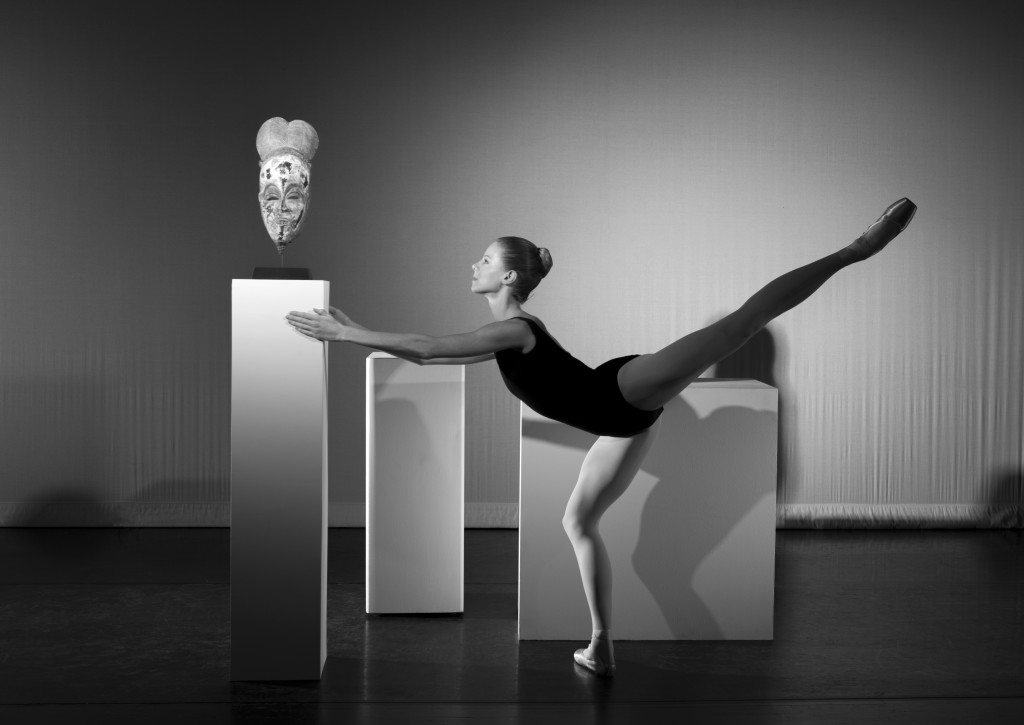
GW: Can you talk about the way you use the audience in the space? I really love the way the audience has to shuffle to accommodate the work. It is so good, this kind of running away from the dancers. How do you navigate or build this tension?
BF: I think the tension, or this uncomfortable, weird encounter, is what I am playing with. In preparation for the performance, I had said to the dancers, “You can walk up to someone in the audience and they will move,” but they did not believe me. After they started getting used to it, they said, “Oh wow, they actually do move. This is fun.” It is really playful for them. I like that strange tension where my audience is having to be part of the choreography. They do not know they are participating, but they are—they are moving their bodies in response, and also in a way, dancing. I love the way, especially at the Graham Foundation—which is hosted within the historic Madlener House—the dance exists throughout the space, moving up and down the stairs. People came in initially with the etiquette of dance, asking where the seats were. Someone said to me, “I came early so I could get a good seat, but they are moving around.” There are all these questions of audience participation and of authority.
GW: You are taking away the hierarchy of the audience.
BF: The dancers are making the audience move, and through that, there is a switch of authority. The audience always watches, but now they are watching in a different way.
GW: Let’s talk about your earlier work. I was interested in As One (2015–17), where two dancers were performing ‘duets’ with classical African masks, among a stage set of pedestals against a curtain backdrop. There are these similarities between this work and The Master and Form. How do you see the works building upon each other?
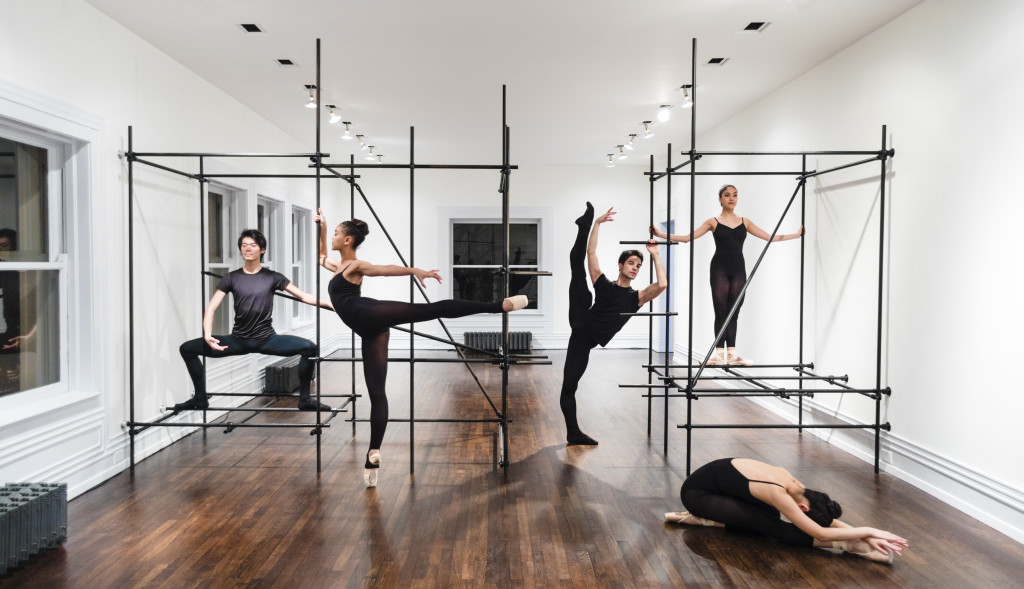
BF: I think all of my work is process-based, in the sense that one piece influences the next, and so on. The photographs that were produced from As One existed initially as a video installation, which was commissioned by the Seattle Art Museum for an exhibition called Disguise: Masks and Global Africa. I had made that film, and then last year, restaged them and photographs the images that you know. So, the work exists as the As One film installation (2015) and the As One photo series (2017). While this work similarly addressed the dynamics of power and hegemony, I was thinking about them in terms of post-colonialism, as well. Where the French colonized parts of West Africa. The French created dance—ballet, as an institution, and also the art museum. At different times the French went and took masks from West Africa. They took them from their place of origin and put them into the museum context—which were then exotified and appropriated in different ways, through art canons like Cubism or the idea of the primitive. The exotified object became an influence for Western canons of art. In As One, I questioned that authority by saying, “What is this object?” As objects, these African masks were at one time performed upon and ‘danced,’ but once placed in the museum context, we have taken away the dance, the body.
In the work, I am challenging that reintervention—giving them back a body, and their cultural specificity, by questioning their provenance and their possible return. In the photographs, [the dancers] are stylized and evocative, and the plinth, a product of the museum, is the body of the mask. The piece proposes a mixture of bodies—between the body of a ballet dancer, and their creation of a body for the object—but also a support for the body.
Within this, I was looking at the ballet body as a commodity, as an art object—and the ways this also relates to the mask as a commodity. In the final works, there is a mixed, collaging of a mask, a leg, a plinth, to create this hybrid body—like an exquisite corpse. Through that, there is an idea of a newness—queering through newness and hybridity. All of these things come together and make something new, which disregards the binary logic that the colonial object must be returned to its origin.
As an installation, the piece existed as a room with four films. So, as a viewer, you would sit in the room, where there were plinths. As an audience member, as one film would end, you would have to move like a little ballerina in your own piece.
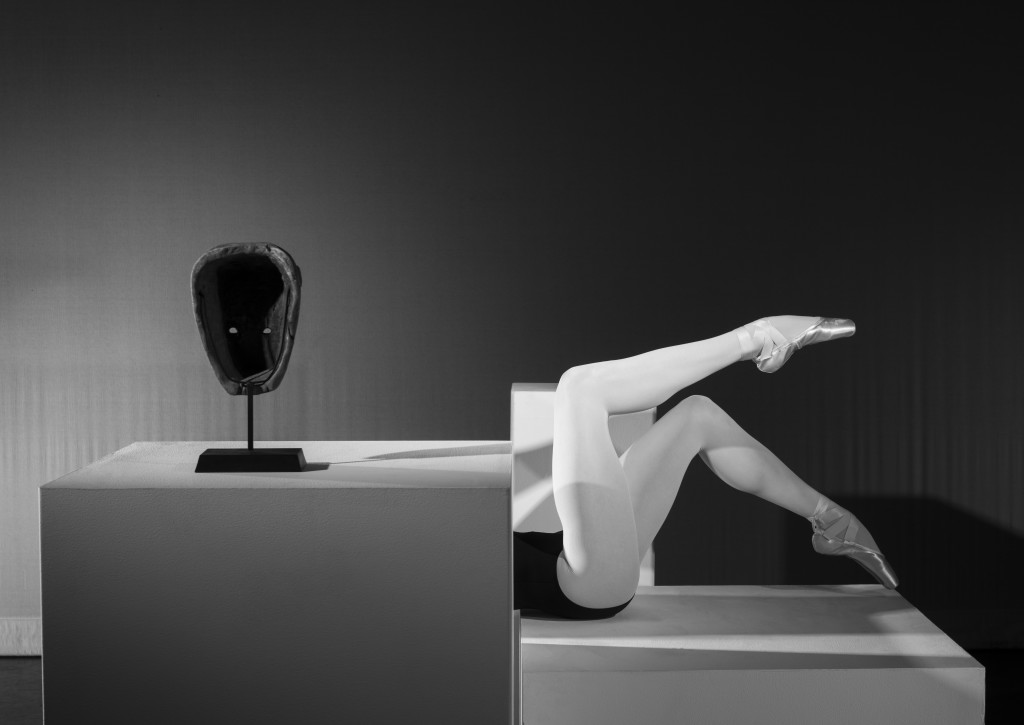
GW: You really like to manipulate the viewer!
BF: I want them to move! I want them to do things. We are choreographed in our everyday. We go to museums, and we do not talk or touch. These are the types of rulebased choreographies I am trying to pick up, so I can break down their associated authorities.
GW: In the talk you had at the Graham Foundation, Hendrik Folkerts briefly mentioned looking at the body as an ‘artifact.’ How do you sculpt an object, or build a performance, to work with this idea of body as artifact?
BF: Body is artifact, body is commodity. Especially a ballet body—we are so sculpted in our rigor and our labor. In this way, I think about a dancer’s body in terms of the commodity. In terms of what you are saying, you can also look at architecture, for example. Or in masked cultures, such as the African mask or souvenir mask—I like to oscillate between the two. Which is the authentic? Authenticity to me seems like a binary, and in this way, nothing can be authentic. Even though the dancer’s body is possibly an artifact, is also exists in other ways: whether that be a commodity, a laboring object, an art form, or through athleticism.
All of these things make me begin to think about the body less as an artifact, and more as an oscillating object—an archetype.
GW: Was there any moment when you began to see that you were moving from dancer to choreographer? Have you taken that role on?
BF: I do not know if I have taken it on! It is weird. I know I make performances and I have scores. When I stopped dancing, I just stopped—I did not talk about it for a long period of time. And so, the relationship to come back to dance has been slow, about ten or fifteen years. I am older and injured, and there are new questions. Coming to make dance has been so interesting—I do not make counted, timed pieces. They are conceptual performances, intersecting visual art and dance. I am always questioning, “What am I? Am I choreographer? Am I an artist?” People will say I am not a choreographer, but that I choreographed a piece— which I did! There is a strange cheekiness to which I am playing within these roles of who I am, which is again a non-definable space.
Brendan Fernandes (b. 1979, Nairobi, Kenya, lives and works in Chicago) is a Canadian artist of Kenyan and Indian descent. He completed the Independent Study Program of the Whitney Museum of American Art (2007) and earned his MFA from the University of Western Ontario (2005) and his BFA from York University in Canada (2002). Fernandes has exhibited widely domestically and abroad, including exhibitions at the Solomon R. Guggenheim Museum, New York; Museum of Modern Art, New York; Museum of Art and Design, New York; Musée d’art contemporain de Montréal; The National Gallery of Canada, Ontario; The Brooklyn Museum, New York; The Studio Museum in Harlem, New York; Mass MoCA, North Adams, MA: The Andy Warhol Museum, Pittsburgh, PA; Deutsche Guggenheim, Berlin; Bergen Kunsthall, Norway; Stedelijk Museum, Amsterdam; The Sculpture Center, New York; The Quebec City Biennial; and the Third Guangzhou Triennial in China. His recent monograph Still Move, was published by Black Dog Press, London, fall 2016. Most recently, he presented The Master and Form, a solo exhibition and performance series at The Graham Foundation, Chicago. Upcoming solo projects include The High Line, New York (summer 2018); DePaul University Art Museum, Chicago (fall 2018); and Museum of Contemporary Art, Chicago (summer 2019). He is currently Artist in Residence and Faculty at Northwestern University in the Department of Art Theory and Practice, and is represented by Monique Meloche Gallery, Chicago.